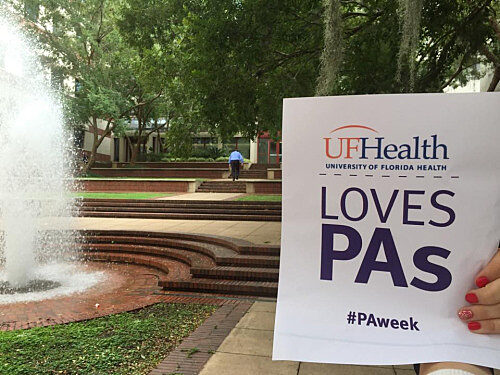Know your healthcare providers: What is a Physician Assistant?
As the country’s patient population grows and patient needs evolve, health care organizations are adding more support for patients with physician assistants,…

Update your location to show providers, locations, and services closest to you.
HISTORY OF THE PROFESSION
The first Physician Assistant (PA) training program was founded in 1965 at Duke University by Dr. Eugene Stead.
Programs require applicants to have a bachelor degree. Applicants also need some experience in the health care setting, such as an emergency medical technician, ambulance attendant, health educator, licensed practical nurse, or associate-degree nurse. The average PA student has a bachelor's degree in some field and about 4 years of health-related experience. Educational programs for PAs are typically associated with colleges of medicine. They vary from 25 to 27 months in length. Programs award a master's degree upon completion.
The first PA students were mostly military medics. They were able to expand on the knowledge and experience they received in the military to move into a role in primary care. The physician assistant role has allowed PAs to perform tasks previously only performed by doctors. These include history taking, physical examination, diagnosis, and patient management.
Many studies have noted that PAs can provide high-quality health care, comparable to that of a doctor, for about 80% of the conditions seen in primary care settings.
SCOPE OF PRACTICE
The physician assistant is prepared, both academically and clinically, to provide health care services under the direction and supervision of a doctor of medicine (MD) or a doctor of osteopathic medicine (DO). PA functions include performing diagnostic, therapeutic, preventive, and health maintenance services.
PAs in all 50 states, Washington, D.C., and Guam have prescriptive practice privileges. Some physician assistants may not receive direct third-party (insurance) reimbursement for their services, but their services are billed for through their supervising doctor or employer.
PRACTICE SETTINGS
PAs practice in a variety of settings in nearly every medical and surgical specialty area. Many practice within primary care areas, including family practice. Other common practice areas are general surgery, surgery specialties, and emergency medicine. The rest are involved in teaching, research, administration, or other nonclinical roles.
PAs may practice in any setting in which a physician provides care. This allows doctors to focus their skills and knowledge in a more effective way. PAs practice in both rural and inner city communities. The ability and willingness of PAs to practice in rural areas has improved the distribution of health care providers throughout the general population.
REGULATION OF PROFESSION
Like many other professions, physician assistants are regulated at two different levels. They are licensed at the state level according to specific state laws. Certification is established through a national organization. Requirements for minimal practice standards are consistent across all states.
Licensure: Laws specific to PA licensure may vary somewhat among the states. However, nearly all states require national certification before licensure.
All state laws require PAs to have a supervising doctor. This physician does not necessarily have to be onsite at the same location as the PA. Most states allow physician supervision by telephone communication with periodic site visits. Supervising doctors and PAs often have a practice and supervision plan, and sometimes this plan is filed with state agencies.
Certification: In the early stages of the profession, the AAPA (American Association of Physician Assistants) joined with the AMA (American Medical Association) and the National Board of Medical Examiners to develop a national competency examination.
In 1975, an independent organization, the National Commission on Certification of Physician Assistants, was established to administer a certification program. This program includes an entry-level examination, continuing medical education, and periodic re-examination for recertification. Only physician assistants who are graduates of approved programs and have completed and maintained such certification may use the credentials PA-C (certified).
For more information, visit the American Academy of Physician Assistants -- www.aapa.org or the National Commission of Certification of Physician Assistants -- www.nccpa.net.

Ballweg R. History of the profession and current trends. In: Ritsema TS, Brown DL, Vetrosky DT, et al, eds. Ballweg's Physician Assistant: A Guide to Clinical Practice. 7th ed. St Louis, MO: Elsevier; 2022:chap 4.
Luke SL, Crouse D, Morton-Rias D. Assuring quality for physician assistants: accreditation, certification, licensing, and privileging. In: Ritsema TS, Brown DL, Vetrosky DT, et al, eds. Ballweg's Physician Assistant: A Guide to Clinical Practice. 7th ed. St Louis, MO: Elsevier; 2022:chap 8.
As the country’s patient population grows and patient needs evolve, health care organizations are adding more support for patients with physician assistants,…
